Gateway drugs are substances that are seen as a stepping stone to using more powerful drugs. These drugs are typically less potent and easier to obtain, making them more commonly used. In some cases, gateway drugs are even legally available, which leads many to believe they are safe. However, the use of gateway drugs can still have negative consequences on one’s health and overall well-being.
What Are Gateway Drugs?
Gateway drugs are regarded as “softer” substances that open the door to exposure to stronger drugs when consumed. They serve as introductory, habit-forming substances that are generally milder and fairly accessible. Some gateway drugs are even legal to purchase, and therefore many don’t consider usage dangerous or otherwise detrimental to health and safety.
Based on their availability, accessibility, and usage, there is no doubt that gateway drugs are also considered socially accepted or even expected. These substances tend to be relatively inexpensive, making them an accessible starter drug for many who are already curious about experimenting with substances.
Gateway drugs can heighten brain activity, provide feelings of serenity or euphoria. However, gateway drugs are particularly dangerous to those with a familial history of substance abuse, or other risk factors indicating an addictive personality.
The Gateway Drug Theory
According to the gateway theory, these drugs eliminate the fear of using more dangerous substances. They stop the feeling of hesitation about the potential harm of stronger drugs. To understand more of the gateway drug theory, let’s discuss some examples.
Common gateway drugs include marijuana and nicotine. When consumed, they can boost one’s dopamine levels. The increase of dopamine levels in the brain creates feelings of pleasure and euphoria, and cause the users to get “high.” When these gateway drugs are used more regularly, the users then develop tolerance. With tolerance, the drugs will have fewer effects and wear-off in a shorter time frame.
Tolerance forces some people to seek much stronger drugs for more dramatic dopamine releases. The lack of satisfaction with drugs because of tolerance gives way to trying illicit substances such as opioids, meth amphetamines, and cocaine. Once more exposed to stronger drugs, it becomes harder to quit—this is often where addiction begins.

Controversy About Gateway Drugs
Critics believe that the whole concept of gateway drugs is fundamentally flawed. They assert that the prevalence of marijuana doesn’t necessarily prove that it leads to stronger drug addiction. Instead, they even consider the use of marijuana as a way to prevent the use of harsher drugs. This still remains under review, and further examinations with a segmentation of gateway drugs by those with risk factors of addictive personality would likely yield vastly different results than for gateway drug users without addictive personality risk factors or a family history of drug abuse.
The Gateway Drug Hypothesis
Critics tried to debunk the idea of having stages in the use of drugs. They insist that other contributory factors would influence a person’s use of illicit substances and addiction. These factors include genetics, social life, environment, peer pressure, mental health, vision problems, and history of abuse. They also claim that no evidence exists to support the gateway drug theory.
Additionally, critics argue that marijuana can be helpful at some point, such as support for quitting smoking. On the other hand, some studies, like the National Center on Addiction and Substance Abuse, prove some milder, fairly-accessible substances can serve as stepping stones for more drug exposure. Based on the report, teens who use gateway drugs are 266 times more likely to develop a cocaine addiction once drug tolerance takes place.
In one survey, it was revealed that cocaine users tried cigarettes, alcohol, or marijuana first before using cocaine later on. 90% of the users who participated in the survey have tried all three gateway drugs. Although there is only limited evidence yet about the gateway drugs theory, the prevalence of drug abuse and addiction leads to more credence to it for better arguments against critics.
What are the Common Gateway Drugs?
The common similarities for gateway drugs include their milder effects, which make people think they are harmless when consumed. As starter substances, they trigger the curiosity of many people with their effects. Satisfied users then become more exposed, developing a habit of seeking more drugs.

Here are some common gateway drugs:
Marijuana
When discussing gateway drugs, marijuana is often the first substance that comes to the mind of many people. What makes it highly popular is its medicinal and recreational purposes. Due to its use, it is relatively accessible and legal in some states. It is a gateway drug which depresses the central nervous system, alternating a person’s attention, ability to learn, and memory.
Some studies reveal that a high percentage of marijuana smokers eventually end up using more illicit drugs, such as heroin, cocaine, and ecstasy, later in life.
Aside from smoking marijuana, factors that include parental conflicts, social anxiety, and depression also impacted the transition to using harder drugs. That’s why it is concluded that the relationship between marijuana use and illicit drug use is just moderate. Some research even suggests that marijuana use could lead to an alcohol use disorder.
Alcohol
Alcohol is largely regarded as a gateway drug based on the results of multiple studies. Also, it is a well-known central nervous system depressant that can impair motor skills and brain function. Despite being highly accessible and legal, alcohol is never harmless. But because of its effects, the likelihood of alcohol addiction is high. In a 2014 study, it is disclosed that about 88% of adults have reportedly tried drinking alcohol at some point in their lives.
Moreover, early-age drinking of alcohol reportedly increases the likelihood of trying illicit substances by 16 times. The earlier the exposure is to gateway drugs, the higher the chance of illicit drug use. With dependency and then addiction following prolonged use.
Nicotine
It is long recognized, based on numerous studies, that tobacco products are gateway drugs. According to an experiment in 2011 where scientists fed rats nicotine-laced water for several days, the rats later experienced an increased response to cocaine afterward. It is also revealed that the nicotine-laced water increased a gene produced response in the brain that triggered a higher level of nicotine addiction.
The use of this gateway drug is also significantly linked to other use of illicit substances, such as marijuana, heroin, and cocaine.
Prescription Drugs
Even though prescription drugs have medical uses and are often under a doctor’s supervision, the abuse of prescription drugs is still increasing in prevalence. Opioids and Xanax are among the most abused prescription drugs, and are both considered to be highly addictive.
When it comes to being regarded as gateway drugs, prescriptions are linked to the use of heroin. These drugs are frequently used together to achieve a more potent high. The combination and abuse of these drugs are extremely dangerous, and is linked to thousands of drug overdose deaths.
Other Substances that Act as Gateway Drugs
There are more socially acceptable substances that work as gateway drugs that cause a boost in dopamine levels, and create drug seeking habits predicating addiction.
Ecstasy
A published study links ecstasy as a gateway drug that leads users to try cocaine and methamphetamine. Because of its high popularity in the rave culture, younger people who consume it are at risk of using harder drugs later in their lives.
Anabolic Steroids
Individuals who use steroids are more susceptible to opioid addiction. They are more likely to be involved in more dangerous drugs than those not exposed to any kind of gateway drug. The gateway drug theory suggests that experimentation with habit-forming substances is the way to get more entangled in illicit drugs.
Inhalants
Some people who have been marijuana smokers or prescription drug users have also become inhalant abusers. Commonly abused inhalants include shoe polish and glue. It has been shown in findings that about 21% of inhalant abusers did not stop there and later moved to using illicit drugs.
Energy Drinks
What’s intriguing about gateway drugs are the substances that qualify as seemingly benign substances, such as energy drinks. Energy drinks are made with high levels of caffeine, and are in demand by individuals who want enhanced energy and alertness. These people who consume energy drinks two to three times more at risk of picking up illicit drugs, such as marijuana and amphetamines.
Too much of anything is always dangerous, even for products which are deemed harmless. Even minor exposure can change how people use drugs.
Signs of Drug Addiction

Drug tolerance caused by regular drug use can lead to a higher level of dependency and addiction. Attention and awareness of symptoms of drug addiction are vital to prevent a life-threatening overdose.
Here are some different signs to look out for detection of drug addiction. Notably, it can drastically change based on different aspects of one’s life.
Physical signs:
Drug addiction manifests in one’s physical appearance and function. Physical signs are, so far, the easiest to spot. Here are some obvious physical signs to observe:
- Drastic changes in daily patterns
- Unusual smells on the body
- Bloodshot eyes
- Sudden fluctuation in weight, either rapid gain or weight loss
- Tremors
- Impaired coordination or slurred speech
- Neglected personal grooming habits
- Deterioration of physical appearance
Behavioral signs:
Drugs also cause changes in behavior when it comes to the day-to-day routine. Strange and questionable behavior are also ones to look out for as they badly influence the quality of life.
- Missing work or school more frequently than normal
- A drastic change in work or school performance
- Engaging in suspicious behaviors
- Financial problems
- Frequently getting into trouble, especially when no prior history existed
- Sudden change in hobbies, friends, and day-to-day habit
Psychological signs:
Since drugs influence the chemicals in the brain, psychological changes also happen. These changes cause a person to act differently than ever before. Signs to look out for include:
- Agitation or giddiness
- Unexplained and sudden change in personality
- Mood swings, such as irritability or angry outbursts
- Time-to-time unusual hyperactivity
- Feeling a lack of motivation
- Appearing anxious, lethargic, paranoid, or fearful with no apparent reason
Prevention and Treatment Options

Understanding that even so called “soft” drugs can be dangerous when misused or overused can help in preventing drug addiction. It should be known that drugs are not harmless, and the concept of gateway drugs is better to believe in to not fall into the deep stages of drug use.
Here’s what to do as an approach to gateway drugs:
Prevention
As introductory, habit-forming substances, it can establish detrimental habits, cravings, and drug seeking behaviors. Researchers found that knowledge and understanding of the danger of any type of drug can be a helpful way of prevention, especially if the drug prevention tactics are already highlighted in school settings. The earlier, the better.
Young people should learn how to avoid peer pressure with drug use, the effects, and dangers of drugs, and the benefits of a drug-free life. Once they know all the information, there will be a lesser chance of picking up harder drugs later in life. Effective prevention is always the best resistance to drug exposure as much as possible.
Treatment Options
Even with efforts in prevention, drug addiction can still occur because of other risk factors. There are always treatment options, and a way to be free from addiction. Finding the right treatment center to start the treatment journey is your first step to freedom and a drug-free life.
Each gateway drug requires certain treatment programs. Treatment doesn’t follow the one-size-fits-all concept. Thus, treatment is always specific and personalized for each individual. To combat drug addiction, a reliable treatment center combines different treatment options, such as medication, moral support, group therapy, and more.
The primary goal of the treatment is to eliminate drug dependency, establish and reinforce habits to create a higher quality, drug-free life. Treatment can take time, but getting help from a professional treatment center with the highest standard of specialized care can support freedom from drugs. Common treatment options for most gateway drugs are counseling, medications, and therapy.
Frequently Asked Questions
If you want to learn more relevant information about gateway drugs, these FAQs may help:
Why is the term “gateway” used in drugs?
The term “gateway” is actually a metaphor used to help better understand the concept of starter drugs that lead to the use of harder substances. Based on the theory, gateway drugs serve as a “gate” into the path of further drug use and addiction. Users who pass the gate of alcohol, tobacco, and marijuana eventually start to use hard or illicit drugs.
Is drug addiction hereditary?
Research reveals that genetics does play a crucial role in whether someone is likely to fall into drug addiction. But genetics alone is not the only factor contributing to one’s drug addiction. Other main factors include environment and temperament.
Is drug tolerance a contributing factor to drug addiction?
First-time users generally feel that drug effects are extremely strong. That is because the body is not used to the substance. But strong effects will not last long because the body will eventually adapt to the drug and become more tolerant. Hence, the effects will be reduced, requiring users to consume more drugs to get the same effects as before.
Drug tolerance often results in escalating patterns of drug usage. This is where people use more and more drugs over time. With that said, drug tolerance is considered a contributing factor to drug addiction.
Why quit drugs?
Quitting drugs can improve your quality of life in many ways. Quitting can:
- Reduce the damage to your physical health
- Improve your physical and mental well-being
- Increase your energy
- Better sleep quality
- Enhance your physical appearance
- Help you reconnect with your emotions
- Save you money
How to avoid using gateway drugs?
There’s no denying that gateway drugs are tempting, most especially for troubled users. Still, you can avoid them by finding the factors that trigger your desire to take them. Once identified, you must avoid those triggers and build up your self-discipline.
You can also avoid gateway drugs by following these measures:
- Surround yourself with people who do not use drugs
- Avoid places where drugs and alcohol are available and used
- Learn to resist temptations
- Distract yourself with more beneficial activities
- Know how to cope with stress without using drugs
Help From Costa Rica Treatment Center
Realizing the need for help in terms of battling drugs can be a scary experience for anyone. It can be overwhelming to think about the treatment. Costa Rica Treatment Center can help with everything. We can offer premium services, skilled and dedicated staff and professionals, and reasonable treatment prices.
Costa Rica Treatment Center has a unique and certified approach and program phases to ensure recovery and healthier life. Ready to change a life? Costa Rica Treatment Center can help you and your loved ones with treatment programs that truly work.
Learn about our treatment programs today.








